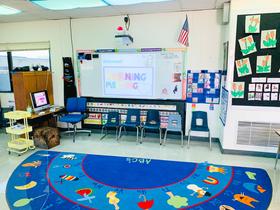Parent-Teacher Conferences: How to Make the Most of Them
Parent-teacher conferences remain one of the most vital bridges between home and school. Done well, they can foster collaboration, deepen mutual understanding, and ultimately support a student’s academic and social-emotional growth. In 2025, as more schools integrate flexible meeting formats and data tools, making the most of these conversations requires intentional planning, respectful dialogue, and follow-through. Below is a refined, actionable guide for parents, teachers, and school leaders to maximize the value of parent-teacher conferences.
Why Parent-Teacher Conferences Matter (Especially Now)
Research confirms what many educators and parents intuitively know: when families and teachers partner, outcomes improve. Students whose parents engage in regular, meaningful school communication tend to earn higher grades, be more consistent in attendance, and exhibit stronger motivation and behavior. Child Mind Institute+1
In recent years, educators have argued that traditional one-sided conference models limit true collaboration and often center the teacher as the sole “expert”. To counterbalance this, conference design is evolving: some schools now use academic parent-teacher teams (APTT) or small-group sessions to build shared insight, then follow up with individual meetings. talkingpts.org+1
Given tight schedules and multiple demands on teachers’ time, maximizing these meetings is more important than ever. Here’s how to do it right.
Before the Conference: Prepare Thoughtfully 1. Start early and coordinate schedules
Most schools schedule conferences in advance, but parents should block off time proactively. Don’t wait until the last minute to scan for open slots. Ahead of your meeting, ask whether the teacher prefers in-person, hybrid, or virtual conferences—many schools now allow options to accommodate busy caregivers.
2. Review your child’s work and assessments
Gather report cards, progress reports, graded assignments, and assessment results. Preview them so you’re familiar with trends in performance. It’s also helpful to request, ahead of time, a summary of student data (grades, growth metrics, attendance). Some districts now send these in advance to help families prepare more meaningful questions. Edutopia
3. Talk with your child
Ask open questions: What are you enjoying in class? What challenges do you face? Is there work you’re proud of? Let your child share their views (if comfortable) so you can bring in their voice during the discussion.
4. Prepare your key questions and priorities
Write down 3–5 questions or topics you most want to address. Prioritize those that may need immediate collaboration: e.g. “How can I support reading at home?” or “What strategies work for focus?” Using a simple agenda will help keep the conversation on track, even if the time is limited.
5. Share relevant context
If there are changes at home or external stressors (health, recent move, emotional challenges), it can be helpful to let the teacher know (in brief). That context can help the educator see the whole child.
During the Conference: Make It A Two-Way Dialogue
1. Begin with rapport
Opening with 2–3 minutes of small talk helps humanize the meeting. Ask about the teacher’s year so far or share something your child told you positively. This builds a collaborative tone rather than an adversarial one. nearpod.com+1
2. Invite the teacher’s view—then share yours
Start by asking: “What’s going well? What are your concerns?” Let the teacher frame their assessment first. Then, you share your impressions, questions, and any relevant context about how your child works best (e.g. “At home, she learns better when we chunk assignments.”).
3. Use student work and evidence
Concrete samples—essays, tests, projects—help ground the discussion. Ask the teacher to walk you through the work: what criteria were applied, where standards were met, and where growth is needed. This “show, don’t just tell” method deepens understanding. otus.com+1
4. Collaborate on action steps—be SMART
Turn challenges into goals. Use SMART goals (Specific, Measurable, Achievable, Relevant, Time-bound) to design next steps. Example: “John will read one nonfiction article weekly and discuss it with me, then bring summary questions to class next month.” Assign roles: what you will support at home, what the teacher will monitor, and check-in points.
5. Ask clarifying questions
Avoid jargon or assumptions. If terms (e.g. “zone of proximal development,” “scaffolding”) are unfamiliar, ask for definitions. Clarify expectations and timelines.
6. Leave some time for open questions or feedback
Give space for surprises or items you didn’t anticipate. Perhaps the teacher sees a behavior pattern you hadn’t noticed—or vice versa. Remain open, curious, and nondefensive.
7. Wrap with next steps and check-in plan
Ask: “When should we revisit this plan?” If possible, propose a simple follow-up meeting or check by email mid-cycle. Ensure you leave with a shared timeline and accountability.
After the Conference: Translate Plans Into Practice
1. Debrief with your child
After the meeting, take a calm moment with your child. Share strengths, acknowledge areas for improvement, and walk through the action steps. Position the conference as a joint effort—not a judgment.
2. Set reminders and checkpoints
Use a calendar reminder for mid-term check-ins. Monitor progress weekly—ask your child how the tasks feel, what’s working or not—and solicit teacher feedback when possible.
3. Keep communication continuous
Don’t wait until the next conference. A quick check-in email can adjust strategies before small issues escalate. Many teachers appreciate updates on how home interventions are going.
4. Reflect on the conference process
Which parts were helpful? Which felt rushed or missing? Use that reflection to refine your approach next time—both as a parent and collaborator.
Tips for Teachers and Schools: Structuring Conferences for Maximum Impact
Schedule buffer times to accommodate discussions that run long.
Share student data and sample work with families beforehand, so parents come prepared. Edutopia
Use structured agendas that invite families to speak first.
Provide prompts or question banks to parents in advance (e.g. “What helps your child focus?”)
Train teachers in relational techniques—e.g. active listening, framing concerns with empathy
Consider hybrid models (group briefings plus one-on-one meetings) or student-led conferences where students present growth goals.
Follow up: send a summary email and shared plan document so all parties have a record and path forward.
Real-Life Example: A Model for Middle School
At Lincoln Middle School in 2025, the English department pilot tested a hybrid model. Teachers first host a 10-minute group kickoff in the library, presenting class-level trends and common strategies. Then, parents rotate through individual 10-minute slots with teachers. An online “Family Conference Guide” (shared 48 hours ahead) invites families to propose 1–2 agenda items. Teachers then send a one-page summary with goals and next steps. The result? Teachers report richer parent questions, fewer “surprises,” and closer follow-through.
Common Pitfalls—And How to Avoid Them
| Pitfall | Consequence | Preventive Strategy |
|---|---|---|
| Dominating the conversation | Parents feel unheard | Ask open-ended questions and pause for the other party to speak |
| Using too much jargon | Confusion or disengagement | Ask for plain-language explanations; clarify terms |
| No follow-up | Plans fall through | Agree on check-ins and reminders ahead of time |
| Reacting defensively | Erodes trust | Acknowledge feedback, ask for examples, seek collaboration |
| Ignoring affective topics | Missed insight | Invite discussion about motivation, stress, or social issues |
Final Thoughts
Parent-teacher conferences are not merely scheduled “check-in” events. They are foundational moments of partnership, allowing educators and families to co-construct the narrative of a student’s learning. In 2025, with hybrid models, shared data tools, and heightened awareness of social-emotional needs, these meetings can become powerful catalysts for growth—if approached with preparation, empathy, and a commitment to shared action.
For parents: arrive informed, speak candidly, and lead with curiosity. For teachers: listen first, ground discourse in evidence, and extend the conversation beyond the meeting. For school leaders: deliberately scaffold conference design and follow-through systems.
When we shift from a “reporting” mindset to a “dialogue and improvement” mindset, parent-teacher conferences become more than events—they become foundational to a culture of trust, responsiveness, and shared responsibility in the educational journey.













